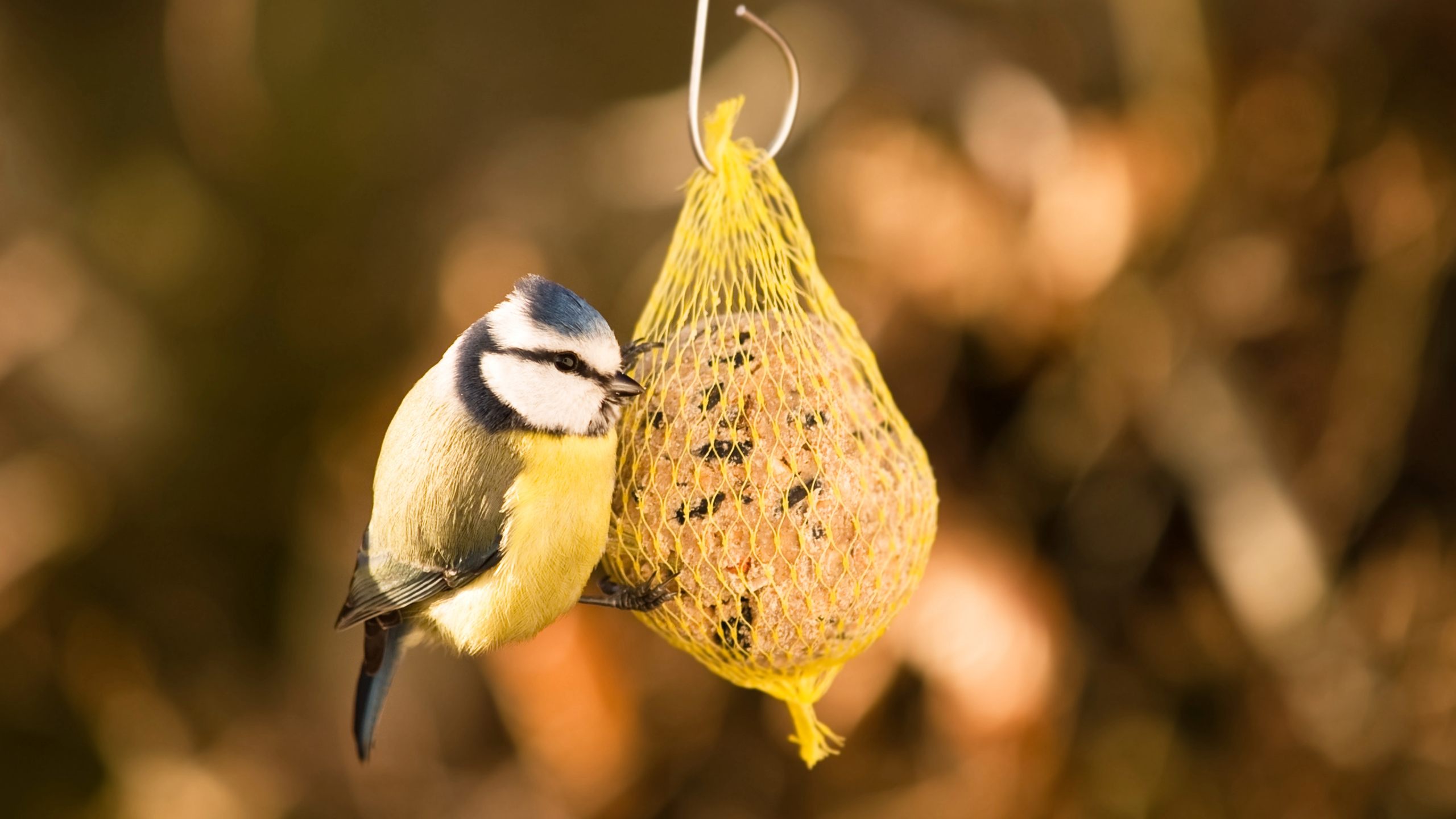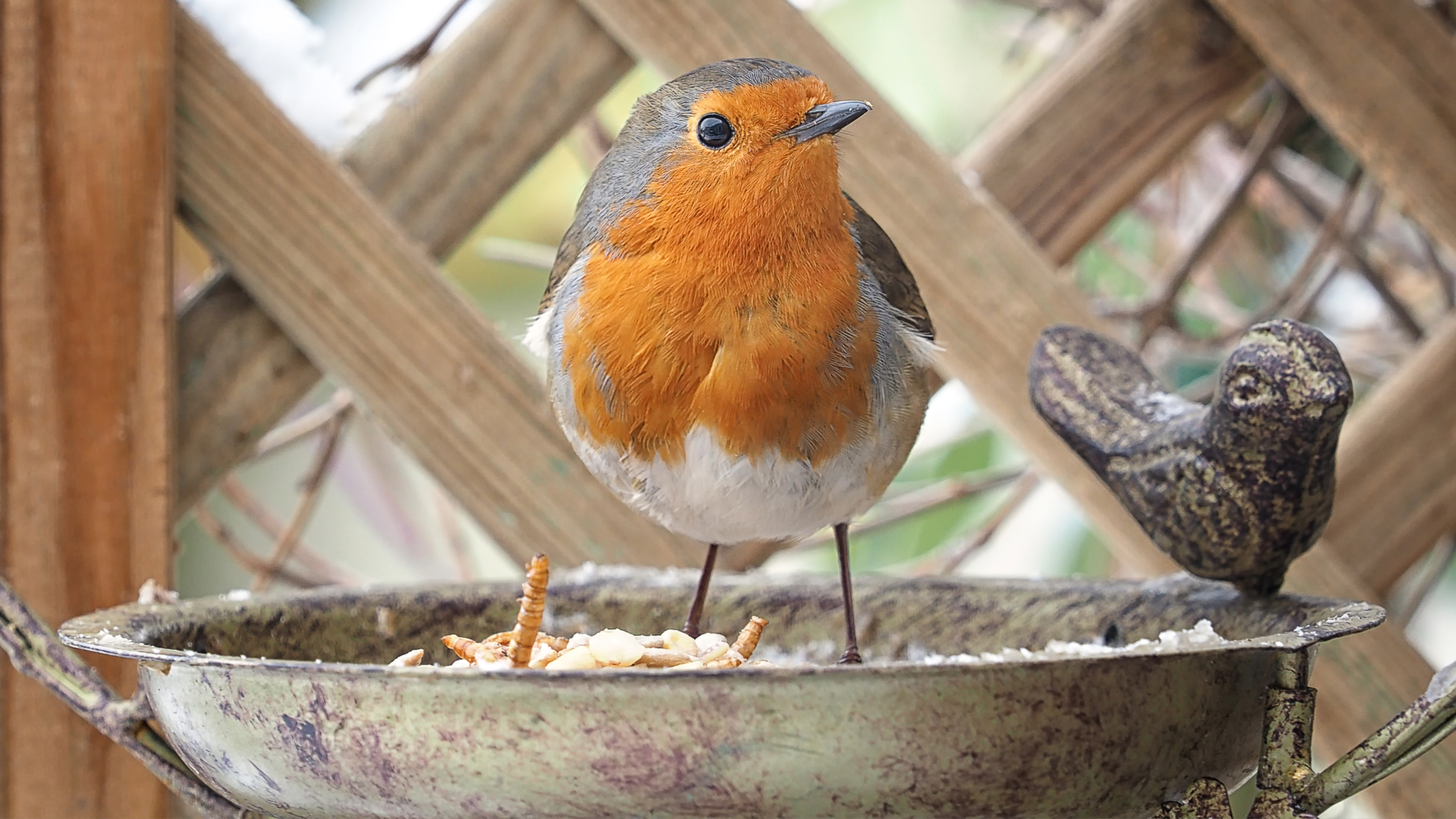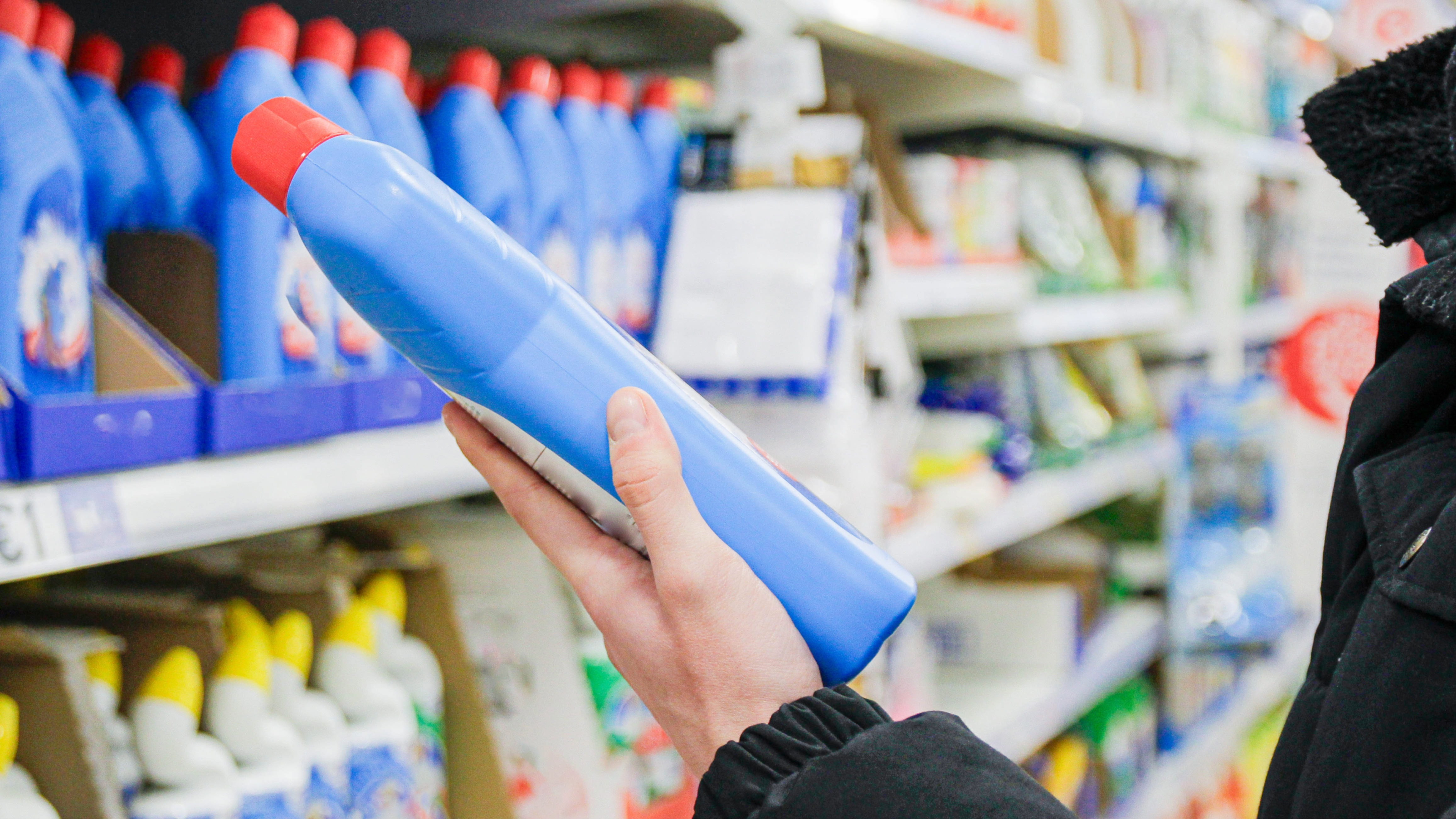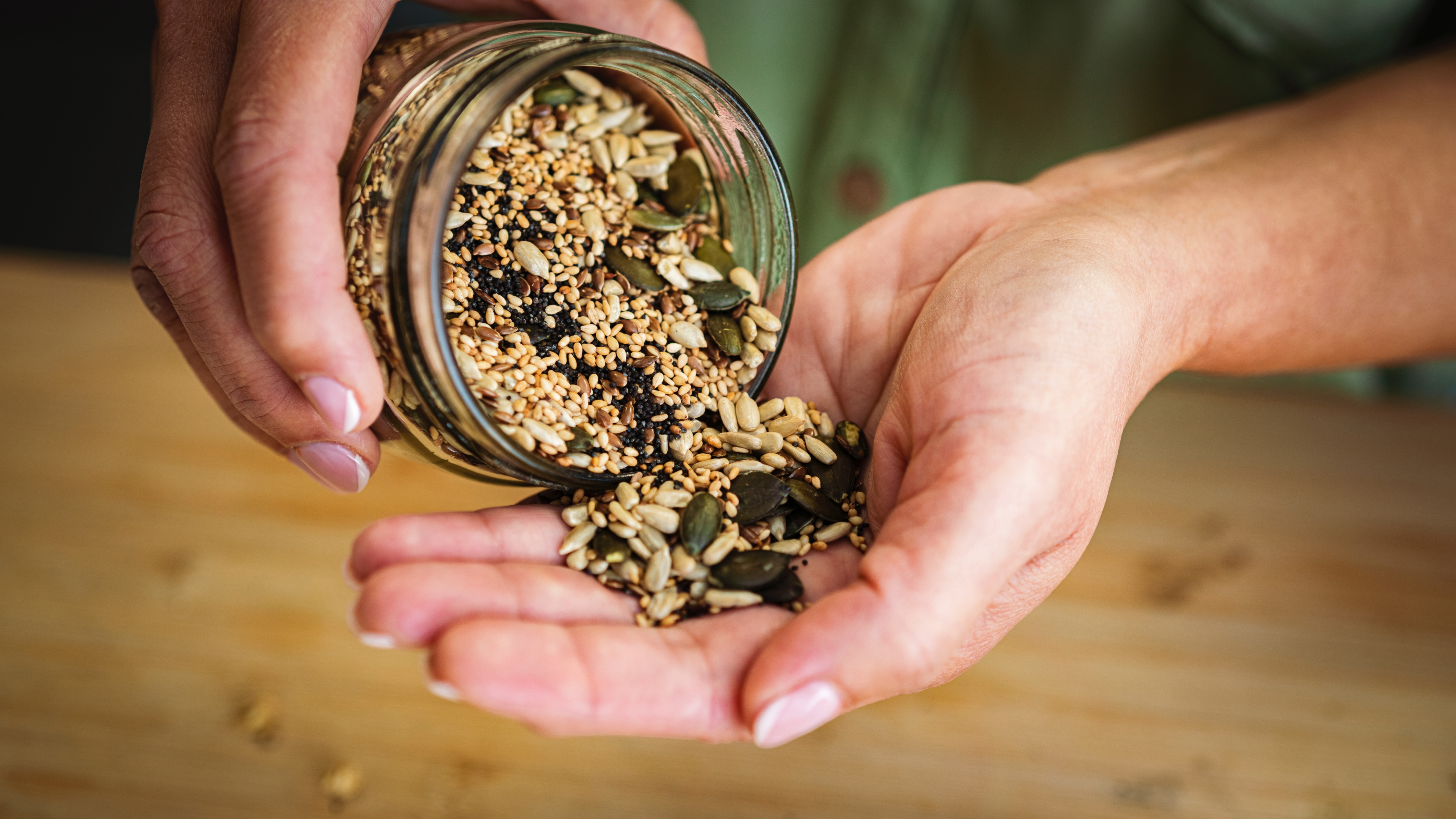
Until we started writing this guide, we had no idea there were so many great tips for taking care of wild birds! If you’re like us and you’re huge fans of the feathered friends that hang out in your backyard, you’ll find the information below super helpful when it comes to keeping them nourished, healthy and safe.
While investing in a few of the best bird feeders is a great starting point, there are lots of other things you can do to take care of the wild birds in your neighborhood. For example, while food is important, so is sticking to a regular feeding schedule and while a good bird feeder is essential, it’s just as vital to keep it clean to prevent toxins from building up.
If you don’t have as many birds in your backyard as you’d like, the tips below will not only help you take care of the feathered friends you do have, they’ll also help you to attract birds to your garden if you’re keen to have more avian species flying in from far and wide.
So, whether you’re a beginner trying to feed the birds but the squirrels keep robin the seed or you’ve had years of experience taking care of wild birds and are looking to up your game, read on as we reveal how to take care of wild birds.
32 tips for taking care of wild birds
1. Provide plenty of clean water

One thing that we often overlook when it comes to taking care of wild birds is ensuring that we provide them with a source of clean water. While this is important in the summer when many places may experience drought conditions, it’s equally vital in the winter months if you live in an area where there’s snow and the temperature dips low enough to freeze water. Not only do birds rely on water for hydration, they also bathe in it, so having a bird bath in your garden will keep them happy.
2. Feed them regularly

It’s important to stick to a regular feeding schedule so that the birds in your area know that they have a reliable and predictable source of food. Put out food at the same time each day to establish a routine for your garden birds — this is particularly important during the autumn and winter months when natural food sources are more scarce. You might want to read our guide on what not to feed wild birds.
3. Install a nesting box

While putting out food is wonderful, if wild birds don’t have anywhere safe to nest they’re not able to protect and raise the next generation of birds, so installing a nesting box in your garden is one of the easiest ways to help your feathered friends. One of the biggest issues for birds is the destruction of their natural habitats, so a nesting box placed close to good foraging locations and bird feeders means they can birth and raise their young in a cozy and safe space.
4. Match food to the season

When it comes to tips on what to feed birds from your garden, the first thing you want to do is consider the season. During the spring and summer, birds require high-protein foods as this is the time when they’re birthing and raising their young. Avoid fat during the warmer months as birds don’t need the extra energy. Instead, try live mealworms, fruit, seeds and grains. Avoid dry or hard foods as adult birds may take these back to their young who can choke on them. In the autumn and winter months, birds need a lot of high-fat, high-energy foods to help keep them warm, so think fat balls, niger seeds, sunflower seeds and small pieces of unsalted peanuts.
5. Provide a variety of dining spots

While it can be tempting to buy just one bird feeder, it’s actually better to have a variety of different styles that you hang or place in different parts of your backyard. The reason for this is that having multiple feeders allows you to cater to the eating preferences of all the birds in your area — you can have ground feeders for larger birds and hanging feeders for smaller birds, plus having more than one feeder also means you can vary the food you put in each one.
6. Clean bird feeders regularly

Bird feeder hygiene is really important for several reasons. Old food and droppings that collect on feeders can pose a serious health risk to our feathered friends, so these need to be removed on a daily basis. Sick birds can also contaminate food and water stations and spread disease, so regular cleaning can help to reduce transmission. When cleaning feeders, wear rubber gloves and dispose of any old food before scrubbing the feeder with hot water containing a 5% disinfectant solution. Rinse the feeder with cold water and allow it to dry completely before refilling it.
7. Keep cats in at night

Do you have cats? If you do, one of the best things you can do to keep the wild birds in your area safe is to keep your feline friends inside at night. Cats like to do their hunting at dawn and dusk, which is when they’re most likely to catch birds off guard, so keeping them indoors during this time will help to protect the local wildlife.
8. Plant bird-friendly trees and shrubs

If you’re really keen to take care of the wild birds in your area, why not consider turning your backyard into a little oasis for your feathered friends? Planting bird-friendly trees and shrubs can help to provide shelter and nesting sites, plus, if they’re rich in berries, they can act as an extra source of food alongside what you’re providing in your bird feeders. Hawthorn, holly, and rowan are all great options, as are seed-bearing plants like sunflowers. Ivy and honeysuckle are also super popular with birds as they provide fruit and attract insects which the birds can then feed on.
9. Don't interfere with baby birds

When we spot birds on the ground, we often think they’re injured and so it can be tempting to intervene. But most of the time, what we’re actually coming across are fledglings that will appear in peculiar places in our backyards. These fluffy baby birds are in the middle of learning to fly and they’re very good at hiding themselves away from predators while they get the hang of using their wings. It’s important not to interfere with fledglings, instead, observe them from a distance to be sure the parents are returning, and if in doubt, contact the ASPCA for advice. If you know what to feed a baby bird, you can also place these items nearby — if the fledgling is old enough, they’ll be able to help themselves and if not, it provides another food source for their parents to access who can then feed the food to them.
10. Be on the lookout for signs of disease

Seeing sick birds can be really distressing and while this is a natural and normal part of the life cycle, knowing what to look for means you can assist them when they need help. Signs a bird is unwell include dirty or matted feathers, difficulty walking or flying, limping, drooping wings, rapid breathing, and excessive drinking. Contact the ASPCA or your local animal rescue center if you’re unsure how to help a sick bird. You can also reduce the risk and spread of disease by keeping your bird feeders clean, offering high-quality foods and a fresh source of water.
11. Avoid toxic cleaning products

While it’s important to clean your bird feeders regularly, many household cleaners can leave behind residues that are toxic to birds, so you’ll want to be careful about the solution you use. It can be tempting to use simple soap and water, but unfortunately, this won’t kill the germs and parasites that spread disease amongst birds. Instead, most organizations suggest a mixture of 95% hot water to 5% disinfectant — the best option being a weak solution of bleach. Rinse the feeder thoroughly afterward to remove any trace of the chemicals you’ve used.
12. Resist the urge to tidy

We know — spring cleaning the backyard can be super tempting! But when it comes to supporting the birds in your area, try to resist tidying up too much. Leaving seed heads on plants for as long as possible provides a vital source of nourishment for birds as they prepare to birth and rear their young. Leaving nesting material around, such as twigs, fallen leaves, and moss, is also really helpful for birds when it comes to finding materials they can use to build their nests.
13. Offer lots of shelter

Bird houses provide a safe and snug home for your feathered friends to shelter from the elements or roost and nest. Using sustainable and durable timber with good insulation properties will ensure birds stay cool in the summer and warm in the winter. Alongside birdhouses and nesting boxes, making sure you have native plants in your garden can also offer birds an alternative habitat they can use to hide from predators and safely introduce their young into the world.
14. Provide different foods for different birds

When it comes to the best bird food, this will differ depending on the types of birds you want to attract into your garden. Berry-eating birds, like robins, bluebirds, and mockingbirds rarely eat birdseed, but they’ll love on soaked raisins and currents. Orioles and tanagers also adore fruit, especially skewered oranges. Woodpeckers and chickadees are huge fans of peanut butter and cornmeal stuffed into holes or smeared over hanging pinecones. As for hummingbirds, a sugar solution of one part sugar to four parts water will keep them happy.
15. Invest in high-quality bird seed

There are lots of different bird seed mixes on the market, but when it comes to which one to choose, we recommend a high-quality mix that contains a variety of seeds that will cater to the diverse nutritional needs and preferences of wild birds. Avoid those that contain lots of filler seeds, such as red millet or wheat, as birds tend not to eat these. High-quality mixes tend to have lots of sunflower seeds, peanuts, nyjer seeds, and flaked maize.
16. Protect food from squirrels

When it comes to how to keep squirrels out of your bird feeder, the first step is to invest in one of the best squirrel-proof bird feeders as this will make it much harder for these cute and crafty creatures to steal your feathered friends' dinner. If you’re rather fond of squirrels like we are, why not consider setting up a food station just for them? This will ensure they stay well fed throughout the year and a squirrel with a tummy full of their own favorite foods will be far less interested in trying to break into your bird feeder!
17. Pay attention to building design

Did you know that most window strike injuries can be prevented by paying careful attention to the type of glass you use and where you plant trees? If you’re in the middle of designing or redesigning your home or garden, things like frosting, window decals and planting trees or bushes near glass can dramatically reduce the chance of a bird hitting your window.
18. Socialize your dog

When it comes to our top tips for socializing a puppy or adult dog, getting them comfortable around wildlife from a young age is at the top of our list. If you have a canine companion, make sure you introduce them to all sorts of birds from a young age (including birds in your garden and bigger birds like ducks when you’re out on a walk) as this will discourage your dog from chasing them.
19. Keep a logpile

If you’re anything like us and love a good fire, then you likely have plenty of wood on hand during the winter months. Instead of storing it in a shed, try stacking it in an open but covered area that the birds can get to — many of our feathered friends adore insects and will love foraging through your logs to tasty morsels to munch on.
20. Consider building a catio

If you have a feline friend why not build a catio or invest in one of the best outdoor cat enclosures? Both of these are wonderful ways that you can provide your kitty with access to nature’s big backyard while ensuring the local wildlife stays safe at the same time.
21. Become a wildlife advocate

Supporting wildlife organizations (either financially, if you can afford to do this, or as a volunteer) is a fantastic way to ensure wild birds are protected and cared for. There are some fantastic groups out there doing amazing work when it comes to wetland rejuvenation, campaigning against deforestation, and just generally caring for the natural habitats of wild birds.
22. Avoid using pesticides

Each year, around one billion pounds of conventional pesticides are applied to grounds across the United States, affecting everything from the food we eat to the grass we walk on and because many of these chemicals remain in the soil for months or even years, they kill so much more than just the garden pests we’re wanting to eliminate. It’s estimated that around 67 million wild birds are killed in the US alone due to pesticides, so one of the best things you can do for your feathered friends is to use natural alternatives.
23. Observe and record bird activity

Bird watching is such a rewarding hobby, so why not keep a journal of the bird sightings in your garden? Not only will it help you track the diversity of species that show up, but it will also give you insight into their behavior and help you spot any signs of disease or illness.
24. Offer live food in the winter

Feeding birds in the winter requires a different approach than in the summer as our feathered friends need more calories during the colder months. You can give them a helping hand by offering live food, like energy-dense mealworms, during the winter as this will provide them with the fat they need to survive the harsher weather conditions.
25. Have a baking day for birds

It’s not unusual for us to bake for our cats and dogs, so it makes sense for us to bake for the birds in our garden, too! Bird cakes containing suet, peanut butter, or other nuts and seeds are a great choice and most can be whipped up quickly. Try customizing the cakes for different birds and place or hang them in locations where these birds will easily find them.
26. Remove wet and soggy food in the winter

Snow and heavy rain can turn the bird food in your feeders to mush, so it’s important in the winter months to remove and replace any food that’s become soggy. Not only is wet food unappealing to birds, it can quickly start to rot, attracting other wildlife that you most definitely don’t want in your backyard!
27. Invest in a bird bath

While taking care of pet birds and wild birds are different, they do share some overlap — such as investing in a good bird bath for your feathered friends to splash about in. A shallow bird bath is brilliant, not just because it offers the wild birds in your area a place to access clean and fresh water to drink, but also because shallow bodies of water give them the opportunity to spruce up their feathers and wash away any dirt and grime.
28. Put overripe fruit in your garden

It can be tempting to throw away the overripe fruit that’s either still hanging on your trees or has fallen onto the ground, but try to resist as while this past-its-best fruit may not be appealing to us humans, our feathered friends love it. Chopping up fruit like apples, pears, and plums and scattering them on your lawn or under shrubs and trees will score you major brownie points with ground-feeding birds. And if you’ve already stewed this year’s fruit or popped it in your freezer, don’t worry — dried fruits, such as raisins, are always a winner.
29. Steer clear of salted nuts

When we think of foods that are good for birds, it’s natural that our minds would go straight to nuts and seeds. And while it’s true that these are excellent choices for wild birds, it’s important to feed nuts and seeds in their natural state, as opposed to those that have been salted. Salty foods can cause dehydration in birds, so stick to plain nuts when it comes to serving up this delicious and nutritious foodstuff.
30. Provide nesting materials

Do you have any spare wool lying around? How about chunks of moss in your backyard? Things like sheep wool, alpaca fibers, moss, and twigs, as well as fabric, yarn, twine, or string made from natural fibers such as sisal all make brilliant nesting material for birds in the spring. Just be sure to steer clear of human hair (which is too fine and can easily cut off a bird’s circulation or cause other injuries) or dryer lint (which soaks up water and may contain chemicals) as both of these can be dangerous for birds.
31. Erect a bug hotel

Bug hotels have become more and more popular in recent years with many people looking for ways to protect native insects and provide them with shelter. Bees, ladybirds, spiders, butterflies, and all sorts of other bugs use the shelter that a bug hotel offers to lay their eggs and raise their young, so if you’re looking for a way to take care of the insect-eating wild birds in your area, erecting a bug hotel can be a great idea.
32. Furnish bird houses and nesting boxes

Many people use sawdust shavings in their birdhouses and nesting boxes but believe it or not, this doesn’t offer anywhere near as much warmth as you may think. Instead, opt for wood shavings, which provide roosting birds with a lot more comfort and insulation.







